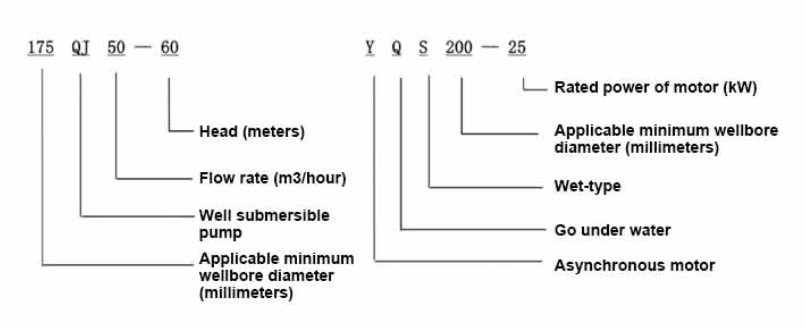Sep . 19, 2024 20:01 Back to list
submersible grinder pump
Submersible Grinder Pumps A Comprehensive Overview
Submersible grinder pumps play a crucial role in modern wastewater management systems. Designed to operate underwater, these pumps are engineered for the removal of sewage and other liquids that contain solid waste. Unlike traditional pumps, submersible grinder pumps grind solids into smaller particles, allowing for efficient transport through pipelines. This innovative technology has become indispensable in residential, commercial, and industrial applications.
How It Works
The primary function of a submersible grinder pump is to manage and transport waste materials that are not suitable for conventional pumping systems. Once installed in a sewage basin, the pump utilizes an integrated grinding mechanism, often made up of rotating blades. These blades shred larger solids, including tissues, food scraps, and other debris, into smaller sizes. This grinding process results in a slurry-like mixture that can be easily pumped through smaller diameter pipes, reducing the risk of blockages and ensuring a smooth flow.
The submersible design allows the pump to be submerged in the fluid that it is pumping, which helps to keep it cool and minimizes noise pollution. The motor is sealed within a housing to protect it from water and contaminants, ensuring longevity and reliability. Additionally, these pumps are often equipped with float switches that automatically turn the pump on and off depending on the water level, enhancing energy efficiency.
Applications
Submersible grinder pumps are highly versatile and can be used in a multitude of settings
. They are commonly found insubmersible grinder pump

1. Residential Areas For home sewage systems where gravity flow is insufficient, grinder pumps can efficiently manage wastewater disposal to the municipal sewer system. 2. Commercial Properties In restaurants or hotels, these pumps effectively handle food waste and prevent clogging in drainage systems. 3. Municipal Wastewater Treatment Grinder pumps are integral in sewage lift stations, ensuring that waste is transported efficiently to treatment facilities. 4. Industrial Applications Industries that produce large volumes of wastewater containing solids can benefit significantly from the reliable performance of grinder pumps.
Benefits
The advantages of using submersible grinder pumps go beyond their robust design. For one, they contribute to enhanced public health by effectively managing waste and preventing sewer backups. They also reduce maintenance costs and downtime associated with clogs, since the smaller particle size they produce helps avoid obstructions in pipes.
Moreover, the installation of submersible grinder pumps can save space in both residential and commercial settings. Traditional sewage solutions often require large, bulky equipment and extensive plumbing infrastructure. In contrast, grinder pumps are compact and can be easily integrated into existing systems, making them ideal for locations with space constraints.
Conclusion
Submersible grinder pumps are an essential component of effective wastewater management. Their ability to grind solids into manageable sizes not only facilitates the smooth operation of plumbing systems but also enhances public health and environmental safety. As municipalities and industries continue to seek efficient solutions to manage waste, the role of submersible grinder pumps is expected to grow, making them a vital investment for the future. Whether for residential needs or large-scale applications, choosing the right submersible grinder pump can ensure reliable and effective wastewater management for years to come.
-
Submersible Water Pump: The Efficient 'Power Pioneer' of the Underwater World
NewsJul.01,2025
-
Submersible Pond Pump: The Hidden Guardian of Water Landscape Ecology
NewsJul.01,2025
-
Stainless Well Pump: A Reliable and Durable Pumping Main Force
NewsJul.01,2025
-
Stainless Steel Submersible Pump: An Efficient and Versatile Tool for Underwater Operations
NewsJul.01,2025
-
Deep Well Submersible Pump: An Efficient 'Sucker' of Groundwater Sources
NewsJul.01,2025
-
Deep Water Well Pump: An Efficient 'Sucker' of Groundwater Sources
NewsJul.01,2025
-
 Submersible Water Pump: The Efficient 'Power Pioneer' of the Underwater WorldIn the field of hydraulic equipment, the Submersible Water Pump has become the core equipment for underwater operations and water resource transportation due to its unique design and excellent performance.Detail
Submersible Water Pump: The Efficient 'Power Pioneer' of the Underwater WorldIn the field of hydraulic equipment, the Submersible Water Pump has become the core equipment for underwater operations and water resource transportation due to its unique design and excellent performance.Detail -
 Submersible Pond Pump: The Hidden Guardian of Water Landscape EcologyIn courtyard landscapes, ecological ponds, and even small-scale water conservancy projects, there is a silent yet indispensable equipment - the Submersible Pond Pump.Detail
Submersible Pond Pump: The Hidden Guardian of Water Landscape EcologyIn courtyard landscapes, ecological ponds, and even small-scale water conservancy projects, there is a silent yet indispensable equipment - the Submersible Pond Pump.Detail -
 Stainless Well Pump: A Reliable and Durable Pumping Main ForceIn the field of water resource transportation, Stainless Well Pump has become the core equipment for various pumping scenarios with its excellent performance and reliable quality.Detail
Stainless Well Pump: A Reliable and Durable Pumping Main ForceIn the field of water resource transportation, Stainless Well Pump has become the core equipment for various pumping scenarios with its excellent performance and reliable quality.Detail
